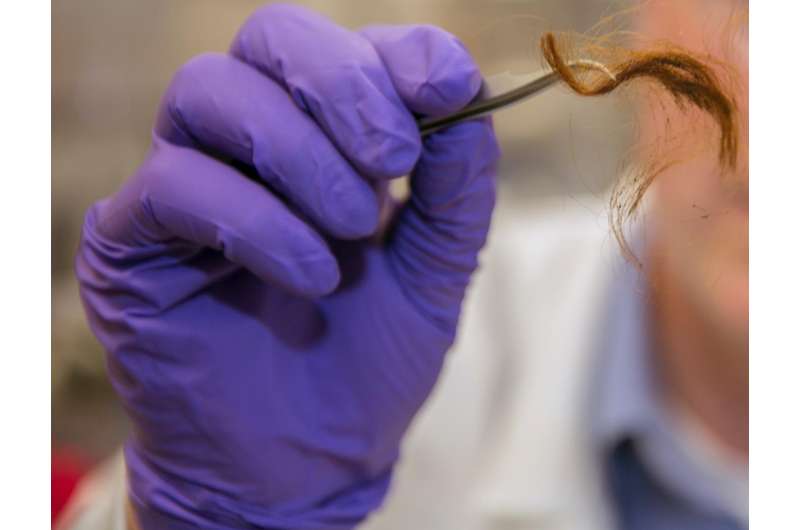Humans may be uniquely identified by the proteins in their hair

Unique protein markers in hair could be used alongside DNA profiling for human identification, according to a study published September 7, 2016 in the open-access journal PLOS ONE by Glendon Parker from Lawrence Livermore National Laboratory, USA, and colleagues.
DNA profiling is commonly used for identification in forensic science and archaeology because DNA is unique to each individual. However, environmental and chemical processes can degrade DNA, limiting its usefulness over time. In contrast, protein is more stable than DNA but can also have variations that may be unique to the individual. Glendon Parker and his team therefore investigated whether the protein found in human hair could offer another tool for identifying individuals in forensic or archaeology scenarios.
The researchers were able to examine bioarcheological hair samples from six individuals that were up to 250 years old, demonstrating the robustness of these proteins. They analyzed these samples along with hair samples from 76 living humans of European American and African descent. They have found a total of 185 hair protein markers to date, which they estimate would be sufficient to provide a unique pattern for an individual that could distinguish that person among a population of one million.
The authors hope to identify a core set of around a hundred protein markers that would be sufficient to distinguish an individual among the entire world's population using a single hair. The new identification technique using protein could offer another tool to law enforcement authorities for crime scene investigations and to archaeologists.
"We are in a very similar place with protein-based identification to where DNA profiling was during the early days of its development," said LLNL chemist Brad Hart, the director of the Lab's Forensic Science Center and co-author of a paper detailing the work. "This method will be a game-changer for forensics, and while we've made a lot of progress toward proving it, there are steps to go before this new technique will be able to reach its full potential."
More information: Parker GJ, Leppert T, Anex DS, Hilmer JK, Matsunami N, Baird L, et al. (2016) Demonstration of Protein-Based Human Identification Using the Hair Shaft Proteome. PLoS ONE 11(9): e0160653. DOI: 10.1371/journal.pone.0160653
Journal information: PLoS ONE
Provided by Public Library of Science


















